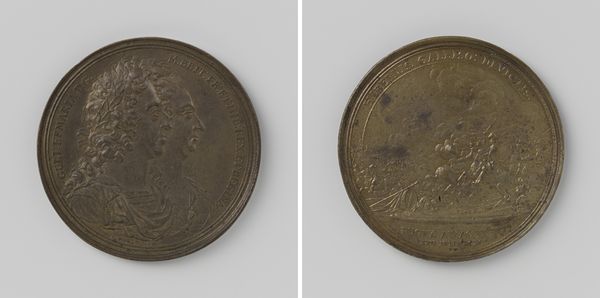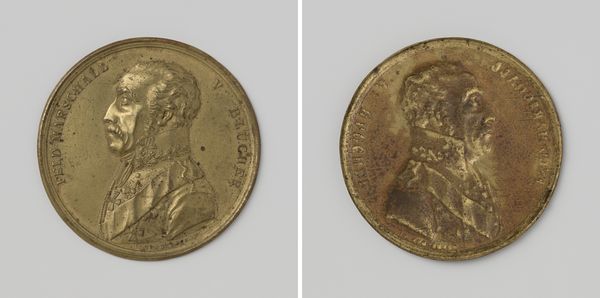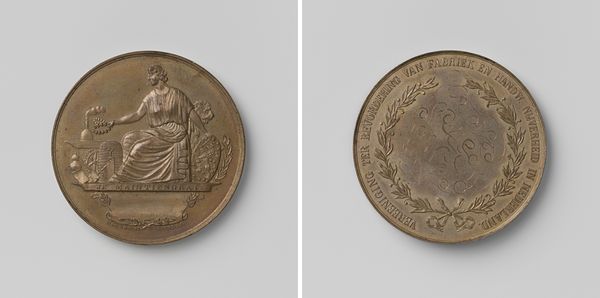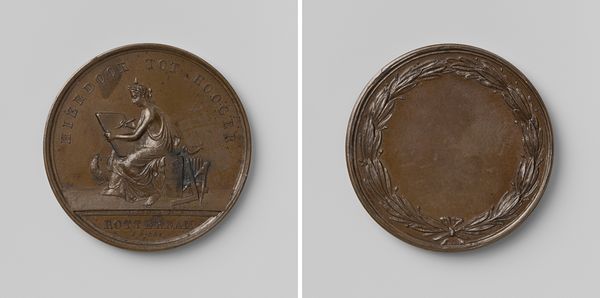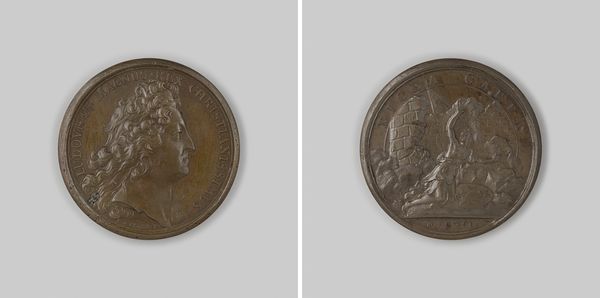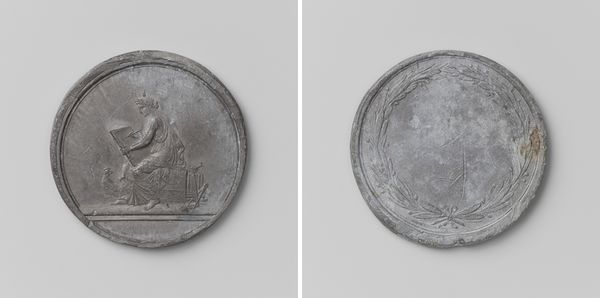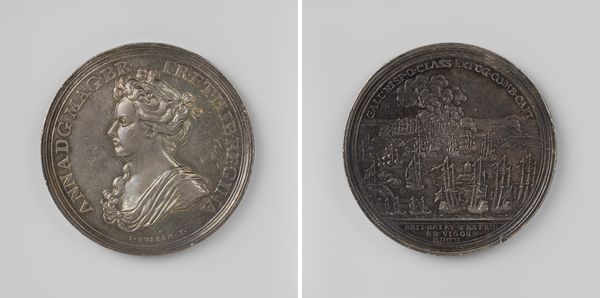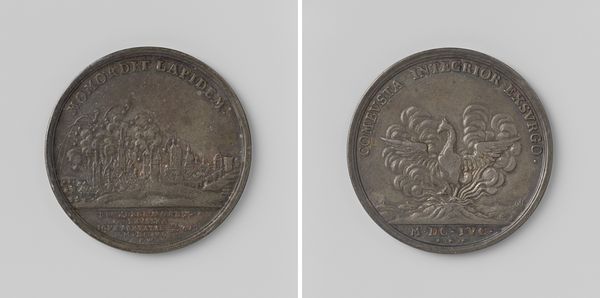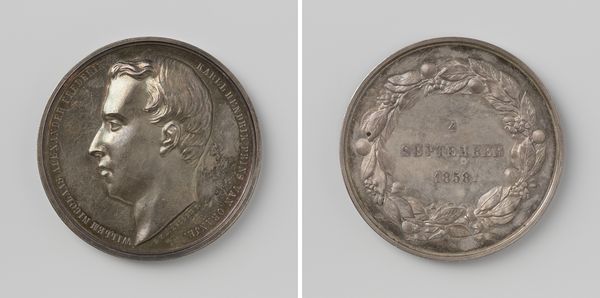
metal, relief, bronze, engraving
#
portrait
#
medieval
#
metal
#
relief
#
bronze
#
history-painting
#
engraving
Dimensions: diameter 4.1 cm, weight 39.58 gr
Copyright: Rijks Museum: Open Domain
Curator: This artwork is a bronze medal, "Anton de la Porte, kannunik te Parijs", created in 1710. It appears to be both engraved and made in relief. What are your initial thoughts? Editor: It’s surprisingly muted, almost melancholic, despite the crisp detail afforded by the metal. The shallow relief gives it a certain intimate quality. The way the light catches makes it seem much older than it is. Curator: The obverse presents a portrait of Anton de la Porte, a canon of Paris, surrounded by an inscription in Latin. How does the depiction reflect societal values, would you say? Editor: I see potent symbols of steadfastness, almost familial continuity on the reverse of this intriguing object. An olive tree bearing fruit – traditionally, a powerful symbol of peace, prosperity, and divine favor. The text around the tree reinforces the sentiment, tying it back to a sense of belonging and blessing within a particular household. Curator: Interesting. Consider the technical skill needed to cast something like this – the mastery of the metal, the control required to create the relief, and the potential significance of these craftspeople as keepers of particular knowledge. What about the context surrounding its creation? Medals like these often served multiple purposes, didn't they? Editor: Indeed. Beyond pure artistry, it likely functioned as a personal token, a symbol of status and affiliation with the Church. And on another level, medals also possess psychological heft—the act of holding or carrying it might have served as a tangible connection to those ideals. Curator: Yes, and think of the physical exchange of such medals – perhaps given to important figures to build or solidify relationships, or worn in public events and contexts to showcase allegiance to this man, or maybe the church. A carefully manufactured piece of bronze designed to enact subtle social effects. Editor: I find it fascinating how the olive tree— a visual marker for the Church’s values—acts almost like a mirror. People were meant to see their place in this tradition and be reminded of how those historical associations played out within themselves and their social structures. Curator: Examining this work deepens my understanding of labor, knowledge, and power, especially considering how an artisan's skill merges with a patron's aspirations. The object is not just the final design, but the human involvement, too. Editor: Reflecting on it now, the medal appears almost to pulse with echoes of history— it binds artistry, religious belief, and human sentiment in a potent, lasting testament.
Comments
No comments
Be the first to comment and join the conversation on the ultimate creative platform.
